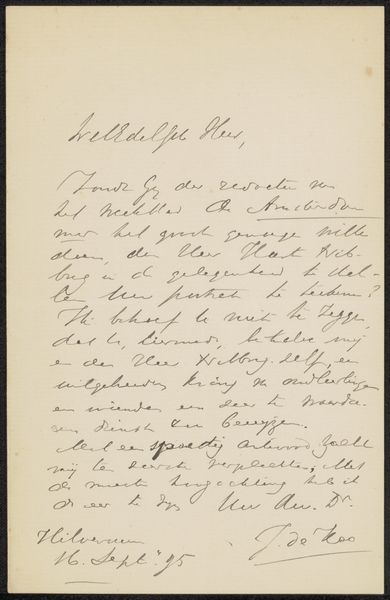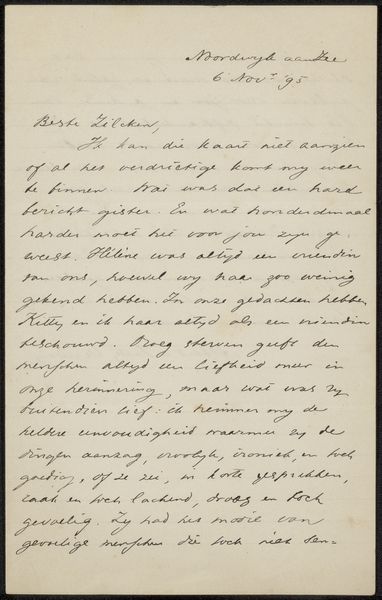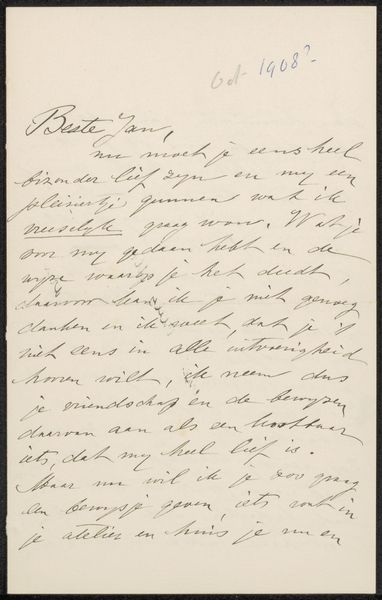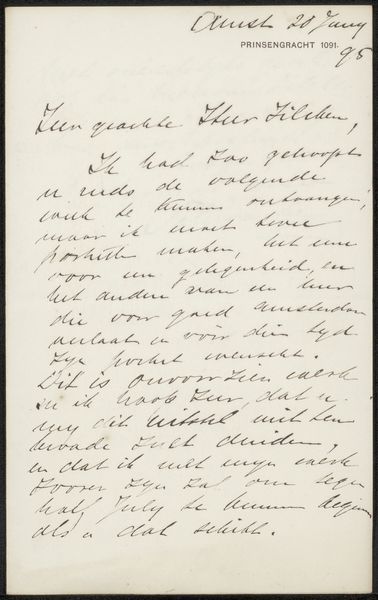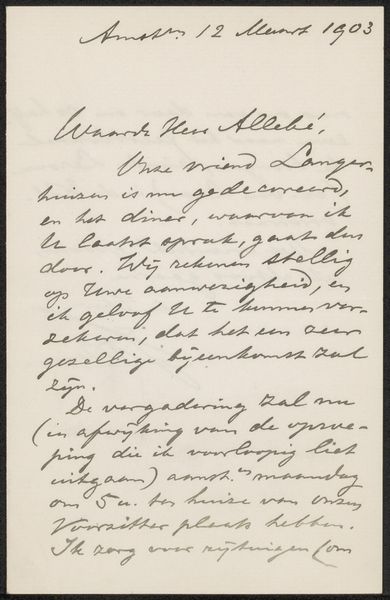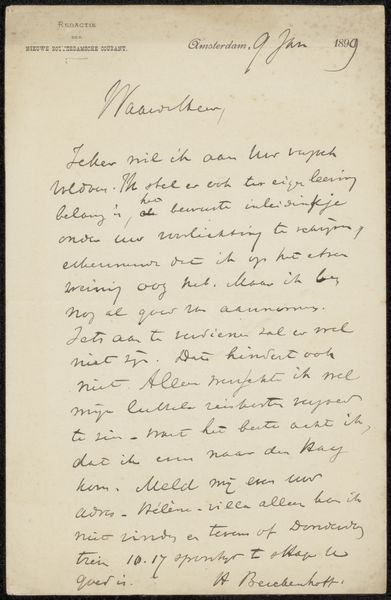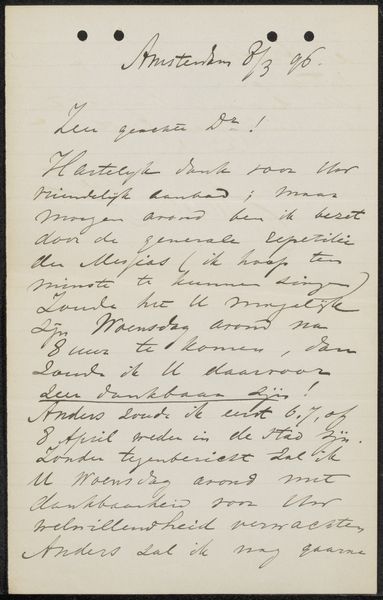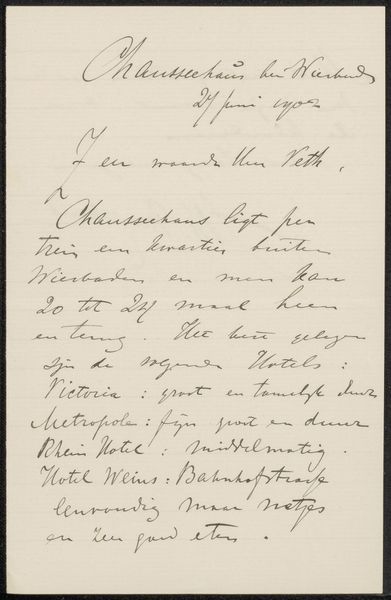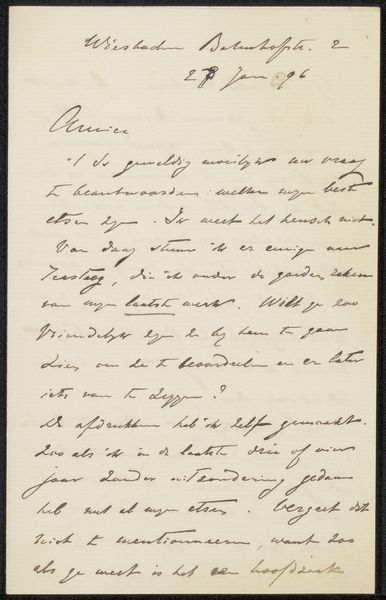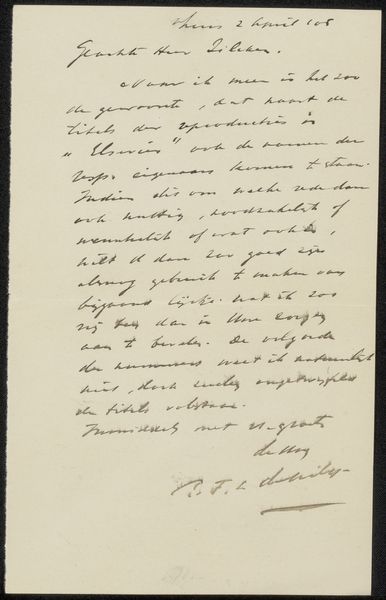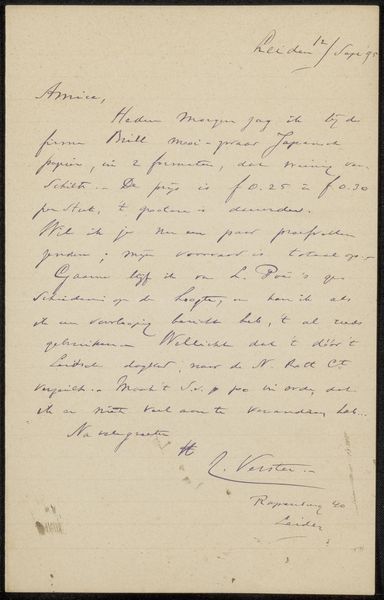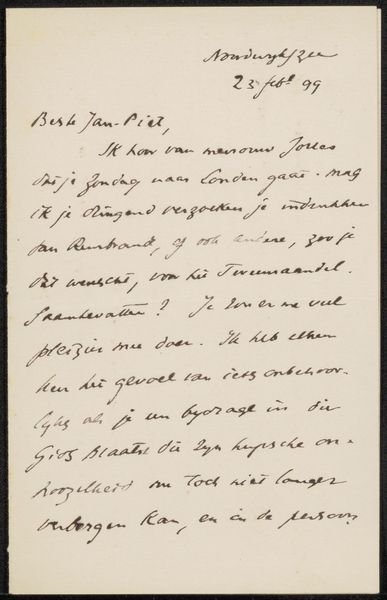
drawing, ink, pen
#
drawing
#
ink drawing
#
pen drawing
#
pen sketch
#
ink
#
ink drawing experimentation
#
pen-ink sketch
#
pen work
#
pen
Copyright: Rijks Museum: Open Domain
Curator: Looking at this, it feels intensely personal, almost fragile. The small scale and looping script make me feel like I’m intruding on someone’s private thoughts. Editor: This is a pen and ink drawing titled "Brief aan August Allebé" by Wally Moes, created sometime between 1866 and 1918. What interests me immediately is the materiality. Pen and ink, humble tools, used to create something intended for communication, a letter, made precious by time. Curator: Exactly! It’s the intimate nature of letter-writing itself. We see the performative aspects of writing for an audience, crafting the letter as a conscious act of self-representation within specific social and personal relationships. It raises questions about how Moes wished to present herself to August Allebé, who the text addresses. Editor: Indeed, consider the labour embedded in the careful strokes of the pen, each character a deliberate act of construction. This links to questions of production— the letter as an object shaped by hand and intent, carrying the very physical mark of the writer. What do you see reflected in the artistic choices Moes made with something that seems quite quotidian? Curator: Thinking about her choice of tools for this note gives insight into Moes’ position as a woman artist during this time. Often marginalized from traditionally valued art forms like painting, working with readily available and inexpensive materials became both practical and possibly subversive, carving space for creation within domestic constraints. Editor: That brings us to how material conditions shaped not just the creation but the content. The choice of pen and ink, its accessibility versus say oil paints, is telling of how artists work within, or push back against limitations imposed on them by their context and resources. It's both social and personal. Curator: Precisely, and this reminds us how historical expectations around gender and creativity influence access and impact artistic choices—from materials, as you point out, to modes of expression. This letter becomes a site where social expectations meet individual agency. Editor: In closing, analyzing Moes’ choice to produce this deeply personal text, by carefully putting ink to page provides an intimate lens through which we can examine labor, artistic expression and social connection. Curator: And how personal exchanges across historical and social landscapes reveal broader cultural truths.
Comments
No comments
Be the first to comment and join the conversation on the ultimate creative platform.

